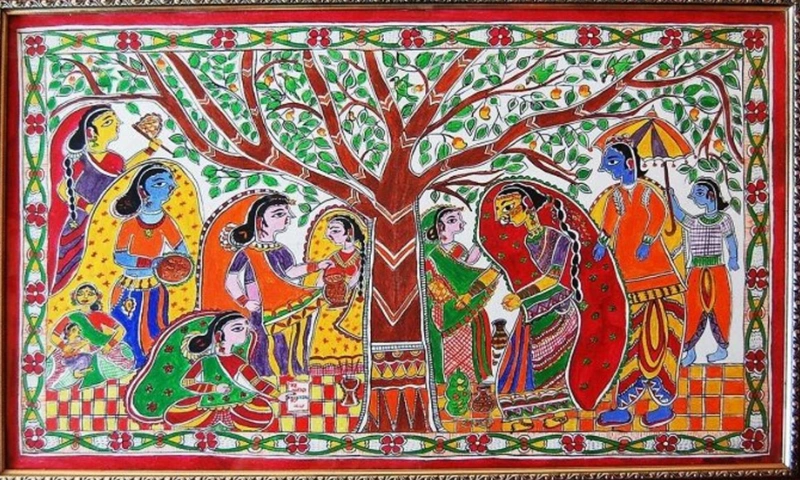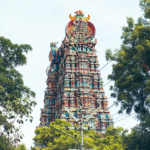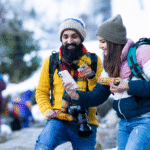
Forms of art in India are limited, but art forms are not. If you are the kind of traveller who looks beyond landmarks and seeks culture, colour, and connection, India is your canvas. It is a place where art does not just hang on gallery walls, it dances in the streets, speaks through hand-stained dye, and echoes in every village song. From tribal murals to temple dances, every corner of India has a story to tell, and art is its favourite language. In this guide, Memorable India sheds light on some of the Indian art forms you can experience first-hand while exploring this vibrant country. Let’s get started:
Every corner of India has its own unique art form. Among all, some have withstood the test of time and become the synonym of Indian art worldwide. Check the below list of some famous art forms of India that bring up a painted picture of India’s diversity:
Welcome to Bihar, the land of epics, philosophy, and the mystical Madhubani Art. These paintings were born in the heart of Mithila that is why also known as ‘Mithila Painting’ are more than just pretty patterns, they are generations of storytelling through brush strokes. Made with twigs, matchsticks, or even fingers, Madhubani Art is rich in folklore. The colours used for these paintings are all natural; think turmeric yellow, indigo blues, and rice paste whites. This art form has been practiced since Satya Yuga (Satya Yuga is the first yuga among four yugas of Hinduism that lasted for 1,728,000 years). You will often find scenes from the Ramayana, Krishna tales, and village life in these beautiful paintings. These paintings are mostly practiced by women using geometrical shapes and dedicated them to flora-fauna and gods. Head to villages like Jitwarpur and Ranti during your art and culture tourism in India to take part in workshops or even paint your own Madhubani souvenir.
Imagine a canvas that sings ancient ballads. That is Pattachitra, India’s scroll painting tradition that dates back over one thousand years. Originating in Orissa and parts of West Bengal, “pattachitra” comes from the Sanskrit words “patta” (cloth) and “chitra” (picture), referring to cloth painting. This one of the Indian textile art traditions mostly depicts mythological themes; mostly involving Lord Jagannath, Radha Krishna, and Rama are painted using bold colours and intricate floral borders. Traditionally cotton sarees layered with tamarind paste and coated with clay powder are used as canvas while some artists even work on dried palm leaves. Now the modern practices of Pattachitra use silk canvas and natural dyes and pigments. This art form is associated with Mahapatra or Maharana people in Odisha, who were temple painters in the past. Visit Raghurajpur in Odisha, a heritage craft village where every home is a mini museum.
Minimalistic. Monochrome. Magic: is what Warli Art is. This art/painting was created by the Warli tribe from Maharashtra. With circles, triangles, and dots, they illustrate everything from marriage rituals to harvest dances. This cultural art of India is considered one of the oldest Indian art originating in 2500 BCE. The beauty of this art is how they paint on mud walls using white pigment from rice paste, creating a raw, earthy aesthetic that’s instantly captivating. The theme of this painting is day-to-day activities like farming, praying, weddings, hunting, dancing, etc. Try a Warli painting workshop in the tribal belts around Palghar or Dahanu to make your Indian art tour worth visiting. It is surprisingly meditative.
If you love nature, you will be drawn to Gond Paintings. Native to the Gond tribe of Madhya Pradesh about 1,400 years ago, this art form turns forests, animals, and trees into visual poetry. This traditional Indian art form looks like it is a gift to Mother Nature by the Gonds through painting the depicts of flora and fauna. Each animal has a story, each tree has a soul that is something these paintings translate to the world. Dotted patterns, vibrant colours, and rhythmic lines bring this art folklore to life. This art form faces a transformation from being painted on mud walls to being painted on paper canvas and gaining international recognition. To experience it, head to Bhopal’s tribal museum or plan a visit to Pachmarhi where you might find Gond artists in their element.
Not art hangs on walls; some wear masks and leap through the air. Chhau is a folk dance meets martial art form practiced in parts of Eastern India (Orissa, Jharkhand, and West Bengal). With dramatic masks, sweeping movements, and mythological themes, its theatre is at its most powerful. This is a male dominated form of art that is accompanied by traditional music, including drums (dhol, kharka) and reed pipes (mohuri, shehnai). Each region has its flavour Purulia Chhau is loud and colourful while Mayurbhanj Chhau skips the masks, but keeps the muscle. This Indian art experience for travellers is spellbound. This dance form was also inscribed on the Representative List of Intangible Cultural Heritage of Humanity by UNESCO in 2010. The best time to catch this performance is during festivals like Chaitra Parba in Odisha and Basant Utsav in Purulia offer front-row seats to Chhau performances under the star.
The moment you step into the Kalari training ground in Kerala, you feel the energy shift. There is fire in the air, both literal and metaphorical. Kalaripayattu said to be the ‘mother of all martial arts’ is not just a combat style, it is the way of life. Originating over 3,000 years back, this experimental art form is considered one of the oldest surviving martial arts in India. With swift spins, gravity-defined kicks, and ancient healing techniques, this art form is poetry in motion. This offers rigorous physical training to develop reflexes, agility, flexibility, mental discipline, focus, and calmness. On your experiential art tourism in India, get involved, watch a demo in Thikri or Kozhikode, or take a beginner class. You will leave with sore muscles and a soaring spirit.
Wake up early during Diwali in India, and you will see women bent over floors creating Rangoli; colorful, symmetrical designs made with powdered pigments, rice flour, or even flower petals. In Tamil Nadu, it is called Kolam and done daily with white rice paste, often at dawn. It is an offering to the divine, a welcome mat for good vibes. The Kolam designs are characterized by geometrical patterns, while Rangoli designs are more free-flowing, floral designs that even depict the deities. Visit during Pongal, Diwali, or Onam. Locals are usually thrilled to teach you a pattern or two.
In the salt deserts of Kutch, the sun bounces off something spectacular, shimmering Lippan Kaam. This traditional mural art uses clay and mirrors to decorate homes. Floral motifs, camels, peacocks, and tribal symbols are all made with hand-molded clay and a glint of mirror to reflect the spirit of the desert. It serves both decorative and functional purposes (insulating homes by reflecting sunlight). This Indian art form is a deeply ingrained tradition in Kutch that has been passed to generations over the years. Stay in a Bhugas in villages like Nirona or Hordka where local artisans will let you try your hand at it and you will get the best experience of Lippan Kaam.
Telangana has a hidden gem, Cheriyal Scrolls Painting. These brightly coloured, highly stylized paintings were one storytelling tool used by wandering minstrels. The scrolls depict episodes from Indian mythology and village life in a comic strip style. These paintings have been awarded the Geographical Indication (GI) tag, recognizing their unique origin and artistic style. Today, only a handful of families carry on this 400 old tradition. The town of Cheriayal is near Hyderabad where you can meet the artists and see the process from cotton canvas to completed scroll.
And finally, Kerala’s Kathakali got a place in your experiential art tourism in India. It is a dance-drama that is so intense, it could move you to tears without a single word spoken. This Indian dance form is believed to have emerged in the 17th century and was initially performed in royal courts and temple precincts. It takes hours to get ready for this performance. The makeup for this dance form is an art itself: green for heroes and red for villains. The stories drawn from the Ramayana and Mahabharat are expressed through eye movements, hand gestures, and intense facial expressions. Catch an evening show in Fort Kochi or Thrissur. Get there early to watch the transformation backstage; it is as dramatic as the performance.
Travel is not just about destinations. It is about the discovery of stories, souls, and strokes of genius that often go unnoticed. Indian art forms are not just things to buy or see; they are conversations, kept alive by the hands that create them and the hearts willing to understand. So, on your next Indian adventure, step into an artist’s home, try a tribal dance, and paint a folk tale. You might just come home with more than memories, you will carry a piece of India’s soul. Book your India cultural tour with Memorable India to map the art trail like Madhubani, Warli, Kalamkari art, etc. We are happy to help you create an itinerary. Just say the word!

12 Jyotirlinga Tour in India – A Sacred Journey For Shiva Devotees
30 Oct 2025
Top 12 Temples in South India You Must Visit at Least Once in Your Lifetime
26 Oct 2025
A Complete Guide To Bandhavgarh National Park For First-Time Visitors
22 Oct 2025
Best Places to Visit in Himachal Pradesh for a Honeymoon: Romantic Escapes in the Hills
17 Oct 2025
Best Places to Visit in Kashmir for a Honeymoon: A Paradise for Newlyweds
12 Oct 2025